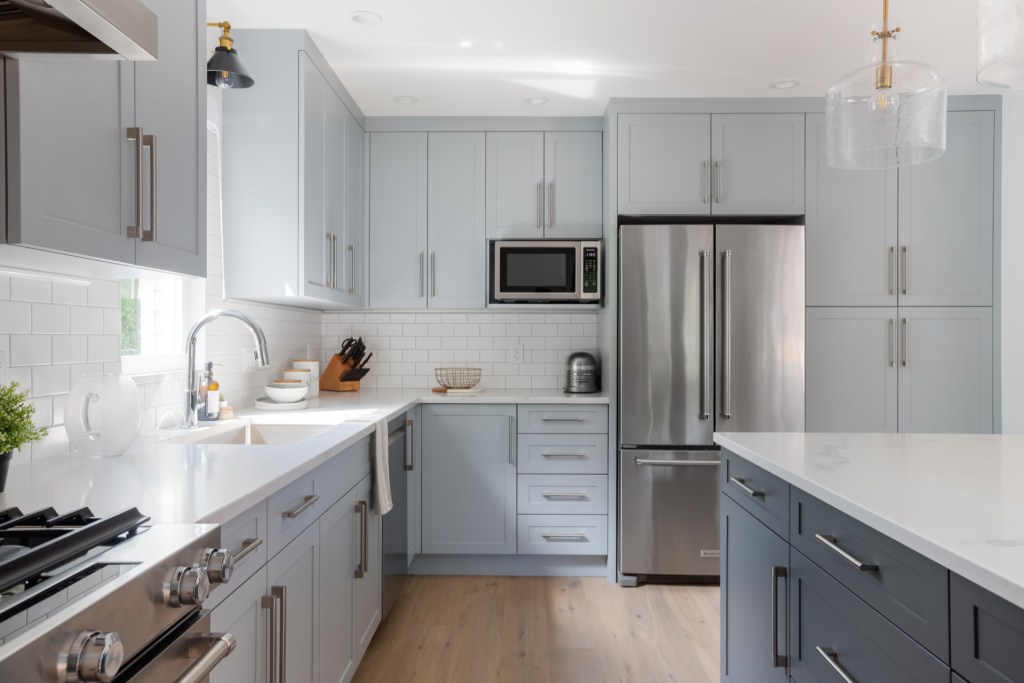Why Water Efficiency Matters in Home Design
Water is one of our most essential, yet undervalued resources. When building or renovating a home, water efficiency should be a top priority. Whether you’re installing a new kitchen, redesigning your landscaping, or building from the ground up, integrating water-saving features into your project not only reduces environmental impact but can also cut long-term utility costs significantly.
#1 Reducing Water Use During Construction
Water-Saving Techniques on the Job Site
Construction often involves water-intensive tasks like dust suppression, concrete curing, and equipment cleaning. Efficient practices include:
Sweeping rather than hosing down surfaces
Using low-volume pressure washers
Covering concrete with burlap instead of continuous water spraying
Checking for leaky hoses and replacing faulty nozzles
Using Greywater and Recycled Water During Construction
Greywater—water from sinks, laundry, or showers—can be reused on-site for dust suppression and tool washing. Installing closed-loop systems for washing machinery can also reduce total water usage.
#2 Preventing Water Pollution at the Construction Site
Mitigating Runoff and Soil Erosion
Stormwater runoff can transport toxic substances like paint and solvents into local waterways. Best practices include:
Installing silt fences on sloped lots
Stabilizing disturbed soil with mulch
Grading land to reduce erosion
Safe Storage and Handling of Hazardous Materials
Always store materials like paint, adhesives, and oils away from storm drains. Use biodegradable, non-toxic building materials when possible to reduce runoff pollution.
#3 Smart Outdoor Water Management
Designing Efficient Irrigation Systems
Install systems with features like:
Drip irrigation for focused watering
Weather-based controllers and soil moisture sensors
Flow sensors to detect leaks or malfunctions
Timing and Methods for Manual Watering
Hand watering remains the most efficient method when done right. Use a soaker hose, water early in the morning or late in the evening, and water deeply to reduce runoff.
#4 Incorporating Xeriscaping Principles
Choosing Native and Drought-Resistant Plants
Native plants are naturally suited to local climates and require less water and maintenance. Group plants by watering needs for more efficient irrigation.
Replacing Lawns with Low-Water Alternatives
Turf grasses consume a large volume of water. Consider replacing lawn areas with drought-tolerant ground covers like clover or creeping thyme.
#5 Capturing and Reusing Rainwater
Installing Rain Gardens and Barrels
Rain gardens help manage stormwater runoff, while rain barrels provide a supplemental water source for gardens and landscaping.
Using Permeable Surfaces and Proper Grading
Pervious pavers and gravel allow rainwater to seep into the ground, replenishing groundwater rather than running off into storm drains.
#6 Efficient Indoor Water Fixtures
Low-Flow Toilets and Faucet Aerators
Modern low-flow toilets use less than half the water of older models. Faucet aerators mix air into water streams, reducing flow without sacrificing pressure.
Water-Saving Showerheads and Appliances
Install showerheads that use no more than 6 liters per minute and opt for ENERGY STAR-rated dishwashers and washing machines for maximum efficiency.
#7 Installing Greywater Recycling Systems
What Greywater Is and How It Works
Greywater systems reuse water from laundry and sinks for toilet flushing or irrigation. While installation requires planning, they can reduce total household water use by up to 50%.
Greywater Integration in New Builds
When building a new home, it's easier to plan for greywater systems with dedicated plumbing and filtration units.
#8 Conducting a Household Water Audit
Tools and Metrics for Measuring Usage
Use smart water meters or manual tracking sheets to identify usage patterns and areas for improvement.
Establishing Baselines for Post-Reno Comparison
Track usage before and after renovations to evaluate the effectiveness of your water-saving upgrades.
#9 Encouraging Water-Saving Behaviors Through Design
Designing for Access and Convenience
Install easily reachable shut-off valves
Use two-basin sinks for handwashing dishes
Ensure faucet handles are ergonomic and easy to use
Behavioral Tips for Long-Term Savings
Turn off taps when brushing teeth
Collect pre-heated water for reuse
Only run full loads in washing machines and dishwashers
#10 Smart Water Monitoring and Leak Detection
Using Water Meters and Smart Sensors
Install devices that track real-time water use or detect leaks automatically. These systems can prevent costly water damage and waste.
Tracking Performance Over Time
Regularly reviewing your water usage data ensures you remain within target and can identify issues early.
#11 Navigating Building Codes and Certifications
LEED and Water Efficiency Standards
LEED certification rewards designs that include water-efficient landscaping, indoor fixtures, and greywater systems. Following LEED guidelines boosts sustainability and property value.
Local Regulations to Be Aware Of
Consult your municipality for water-efficiency requirements. Vancouver, for example, mandates high-efficiency plumbing fixtures in new homes.
#12 Cost and Environmental Benefits of Water Efficiency
Utility Bill Savings and ROI
Efficient water systems reduce monthly utility costs. Though some upgrades have higher upfront costs, the long-term savings often offset them within a few years.
Protecting Local Water Resources
Reducing household water demand helps preserve local ecosystems, prevent shortages, and support sustainable communities.
FAQs
Q1: What is the most effective way to reduce water use during a renovation?
Install low-flow fixtures, fix leaks, and use water-efficient landscaping methods.
Q2: Are greywater systems worth the investment?
Yes, particularly for new builds. They can reduce household water use by up to 50%.
Q3: Do water-saving features affect performance?
Modern technologies maintain performance while using less water, especially in kitchen and bathroom fixtures.
Q4: How can I make my outdoor watering more efficient?
Water early or late, use drip irrigation, and install moisture sensors.
Q5: Is rainwater harvesting legal in all areas?
Regulations vary. Check your local laws before installing a system.
Q6: How can I tell if my home is using too much water?
Conduct a water audit using utility bills, smart meters, or online calculators to benchmark usage.
Water efficiency is not just a trend
—it's a necessity. Whether you're building a new home or updating your current space, integrating smart water strategies benefits the environment, reduces utility bills, and future-proofs your property against rising costs and water scarcity. From job site practices to indoor fixtures and outdoor landscaping, each step you take toward water efficiency makes a lasting impact.






